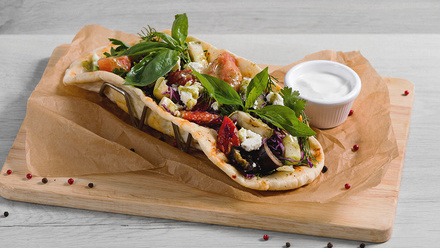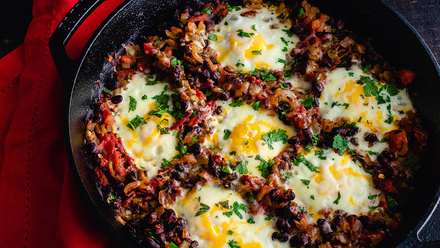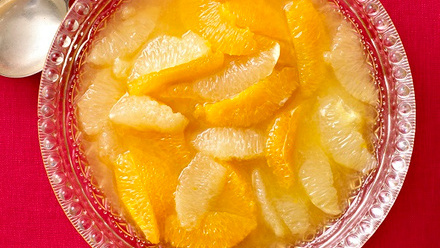A pilaf is traditionally rice cooked in a seasoned broth. This one-pot recipe uses leeks (in season during winter) and bulgur wheat – which is a source of fibre, is low in fat and has a nutty taste.
Fresh, colourful and providing your weekly portion of oily fish, this is a great midweek family meal in itself. Or serve it with seasonal steamed cabbage to boost your vegetable intake.
Ingredients
1 leek
1 stick celery
1 red pepper
2 medium carrots
2 x 5ml spoons olive OR sunflower oil
½–1 x 5ml spoon chilli flakes
1 x 5ml spoon cumin seeds
450ml hot water
150g bulgur wheat
100g spinach (fresh or frozen)
1 lemon
4 small salmon fillets (500–600g total weight)
Small bunch (10-15g) fresh parsley (optional)
Black pepper (optional)
Equipment
Weighing scales
Chopping board
Sharp knife
Grater
Measuring spoons
Large saucepan with well-fitting lid
Wooden spoon
Kettle
Measuring jug
Lemon squeezer
Pan stand
Instructions
- Wash the leek, celery and red pepper. Thinly slice the leek and celery. Remove the stalk and discard the seeds from the red pepper then cut the flesh into 2cm pieces. Peel and grate the carrots.
- Heat the oil in the saucepan on a medium heat, add the leeks and celery and cook for 3 minutes, stirring occasionally.
- Add the red pepper to the saucepan and cook for another 2 minutes, stirring occasionally.
- Add the grated carrot, chilli flakes and cumin seeds to the saucepan and cook for 2 minutes, stirring regularly.
- Add the hot water to the saucepan along with the bulgur wheat. Stir everything together briefly, put the lid on the saucepan and simmer for 7 minutes. (If using frozen spinach, add it 2 minutes before the end of this time and increase the heat under the saucepan briefly while it defrosts.)
- While the bulgur wheat is cooking, grate the zest from the lemon and squeeze out the juice. If using fresh spinach, wash it.
- Add the lemon juice and zest and fresh spinach (if using) to the saucepan and stir through.
- Place the fish fillets in the saucepan on top of all the other ingredients, skin side down. Replace the lid and simmer gently for 8 minutes. During this time the bulgur wheat will absorb almost all of the remaining water and the fish will steam.
- Check whether the fish is cooked. If your fish is quite thick you may need to cook it for another2–3 minutes on a low heat, or you could remove the saucepan from the heat but leave the lid on for 5 minutes (the fish will continue to cook) then check again.
- Meanwhile, chop the parsley (if using). You will need about 2 x 15ml spoons. An easy way for children to do this is to cut it up inside a cup using scissors.
- When the fish is cooked, sprinkle over the black pepper to taste (if using) and the chopped parsley (if using) and serve straight from the saucepan.
Skills used include:
Washing, weighing, measuring, peeling, chopping, grating, boiling/simmering, frying and steaming.
Top Tips
- When the salmon is cooked it will become opaque, feel firm and flake easily with a fork. Be careful not to overcook it – it will continue to cook in the saucepan when it is removed from the heat if the lid is left on.
- Try to buy fish that is sourced from a fishery committed to sustainable fishing practices – look for the Marine Stewardship Council logo on packs (see www.msc.org).
Something to try next time
- Try using other firm white fish like pollock, which is usually cheap to buy.
- Raisins or sultanas are a tasty addition to this dish. Add 75g at step 7 along with the spinach and lemon juice.
- You can try all sorts of vegetables in this recipe, so it’s good for using up spare food. Green peppers, sweetcorn/baby corn or frozen peas all work well.
- For a vegetarian version, at step 8 stir through a 400g can of chickpeas instead of the fish.
Prepare now, eat later
- Any leftovers can be chilled and reheated in a microwave. Store, covered, in the fridge for up to 24 hours. Reheat until piping hot.







